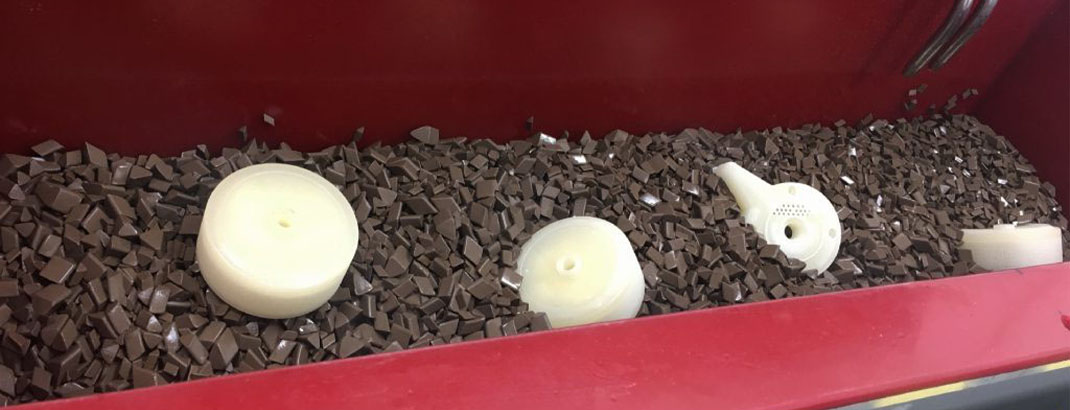Background
ActOn Finishing is a Coventry-based firm who specialise in surface finishing metal parts, primarily for the automotive industry.
During a Made in the Midlands event in 2018, Ricoh 3D approached ActOn Finishing to see if they would try 3D printed polymer finishing.
Despite possessing and having expertise in a comprehensive range of surface finishing systems, dealing with additively manufactured parts represented new territory for the firm.
Challenge
Since Ricoh 3D prints polymer parts in a variety of shapes and sizes, the company wanted a vibratory system that could accommodate several different parts while achieving smooth surfaces.
“We were aware that the technology was already being used in the industry to smooth 3D printed parts manufactured in Nylon, however, we did not want to simply accept that the established method would be suitable for our polypropylene material,” said Richard Minifie, Senior AM Engineer, Ricoh UK Products Ltd.
Solution
Richard added: “We began to look for a technical partner who would conduct tests across a range of technologies and various media types to provide conclusive data that would allow us to identify the most suitable smoothing process before purchasing the technology.”
ActOn demonstrated how its vibratory finishing technology could smooth surfaces in a variety of times, but not without a few hiccups along the way.
Ricoh 3D didn’t have a specific Ra value requirement, but chose the preferred finish and timeframe based on the requirements of its customers.
The parts provided to ActOn included vehicle bumper components, wing mirrors, and rotary atomiser parts, the initial roughness surfaces of which ranged between 3.6 and 13 microns.
The components were initially processed in a Centrifugal High Energy (CHE) machine for an hour.
The trial was carried using a highly abrasive ceramic media and a concentrated liquid compound, which acts like a cleaner and polisher. This achieved a surface roughness between 1 and 3 microns, but parts were slightly damaged, thus, a medium abrasive plastic was used instead of a highly abrasive one.
Again, there was damage, so the use of CHE was ruled out and ActOn turned to its Vibratory Finishing machines.
Results
Harnessing the same ceramic media and liquid compound as the first trial, the 3D printed components were processed in ActOn’s Vibratory Bowl machine for 20 hours, and finally achieved parts that showed no damage, and with a Ra value of between 0.5 and 3 microns, looked good.
Larger parts were then also tested on ActOn’s Trough Vibratory Finishing machine, which also proved successful.
The rotary atomiser head, for example, started at 7.2 microns, and after 4 hours in the Trough machine was reduced to 5.9 microns, and a further four hours, down again to 3.7 microns, with no visible drawbacks.
Damage on thinner wall sections of parts was noticed during finishing processes between 8 and 20 hours, so Ricoh 3D was advised not to exceed 8 hours and use a mix of sizes of the abrasive ceramic media, the concentrated liquid compound for cleaning and polishing, and water.
ActOn also advised Ricoh 3D to use a divider plate to separate larger parts and smaller parts into two different chambers.
Testimonial
Use of ActOn Finishing’s machine has seen a reduced cost per part, consistent results, a projected return of investment within 12 months, and improved the Ra value down to three microns on some components.
Ricoh was thankful for the tips and suitably impressed with the results.
“As engineers, we like to capture lots of data to prove processes and learn through experimentation,” Minifie said.
“During this collaborative project, we were able to share knowledge with ActOn Finishing to quickly establish a smoothing process for SLS printed parts.
“This open style learning approach is really important to Ricoh, because the knowledge developed provides value on both sides which in turn increases the chances of future collaborative projects.”
